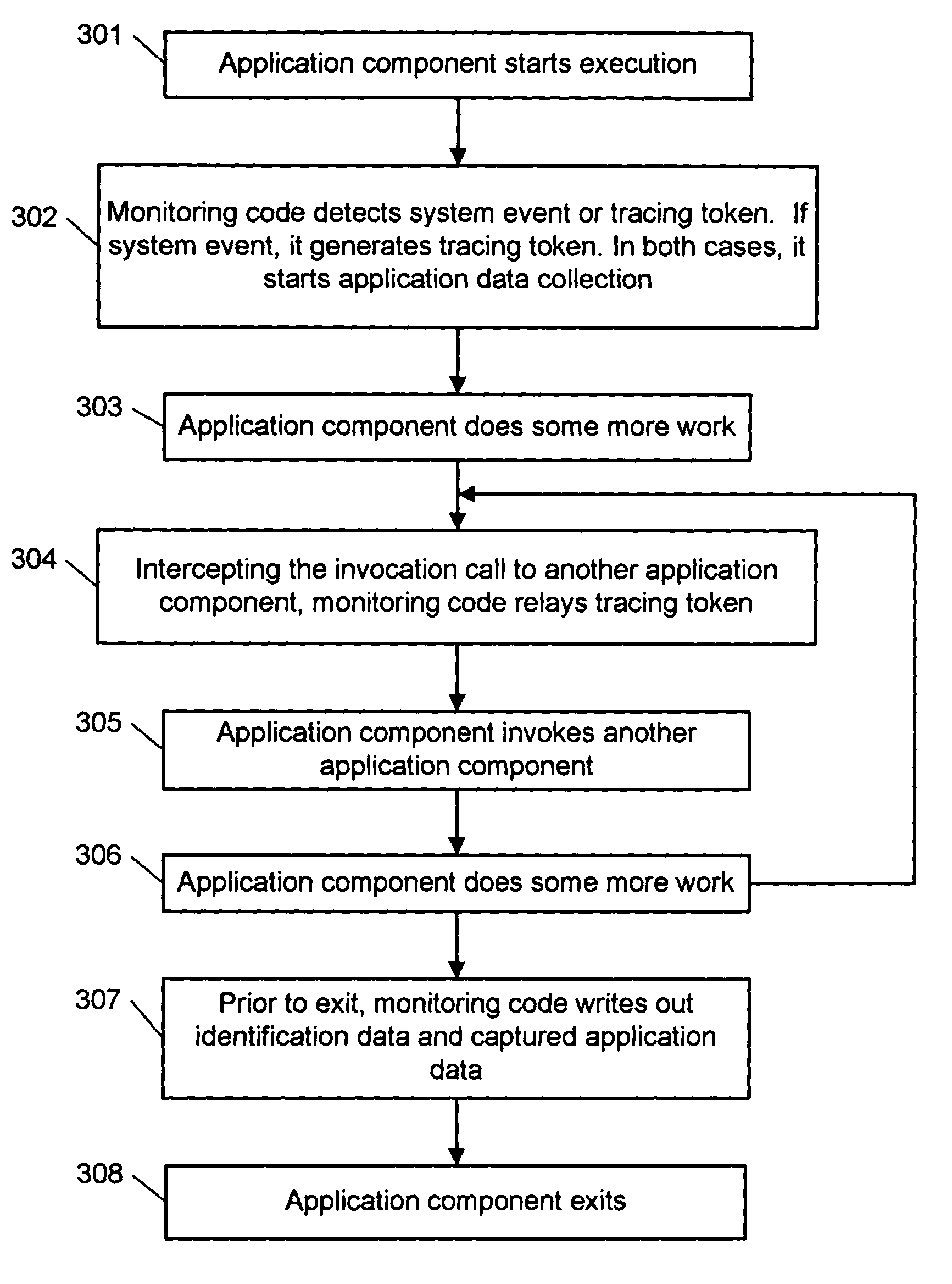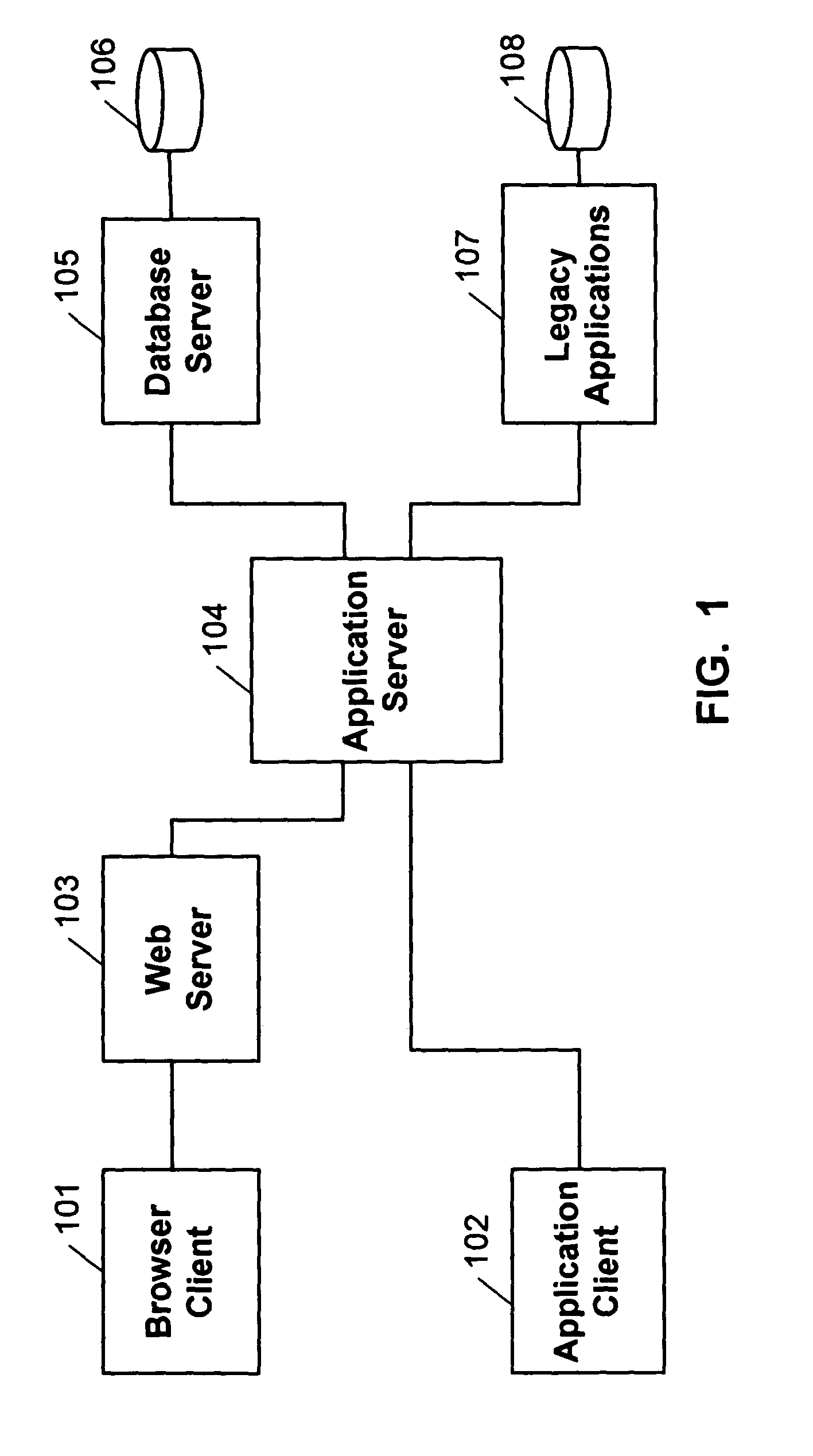Method for tracing application execution path in a distributed data processing system
a data processing system and application technology, applied in the field of troubleshooting application software problems, can solve the problems of increasing complexity of application environment, increasing difficulty in understanding the operational behavior of application environment, troubleshooting functional, performance, availability, security problems, etc., and achieve the effect of reducing system resources overhead
- Summary
- Abstract
- Description
- Claims
- Application Information
AI Technical Summary
Benefits of technology
Problems solved by technology
Method used
Image
Examples
Embodiment Construction
[0036]The present invention is directed to an efficient method for analyzing application operations or troubleshooting application problems in a multi-tier distributed application environment using a dynamic tracing technique. As noted above, there is a need for providing a method for quickly and automatically identifying all applications involved in a system operation or in the occurrence of a problem in a distributed application environment. This is accomplished in the present invention by tracing all applications and application components along the execution path where a problem is detected. The tracing function is triggered and performed by monitoring code installed into the applications, or components thereof, which incurs only minimal system resource overhead.
[0037]The unit of monitoring is an application component which includes application programs, plug-in programs, program extensions (such as filters), static library programs, dynamic library programs, and program scripts...
PUM
 Login to View More
Login to View More Abstract
Description
Claims
Application Information
 Login to View More
Login to View More - R&D
- Intellectual Property
- Life Sciences
- Materials
- Tech Scout
- Unparalleled Data Quality
- Higher Quality Content
- 60% Fewer Hallucinations
Browse by: Latest US Patents, China's latest patents, Technical Efficacy Thesaurus, Application Domain, Technology Topic, Popular Technical Reports.
© 2025 PatSnap. All rights reserved.Legal|Privacy policy|Modern Slavery Act Transparency Statement|Sitemap|About US| Contact US: help@patsnap.com



